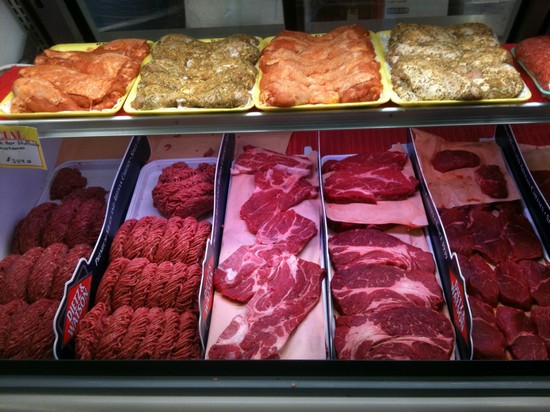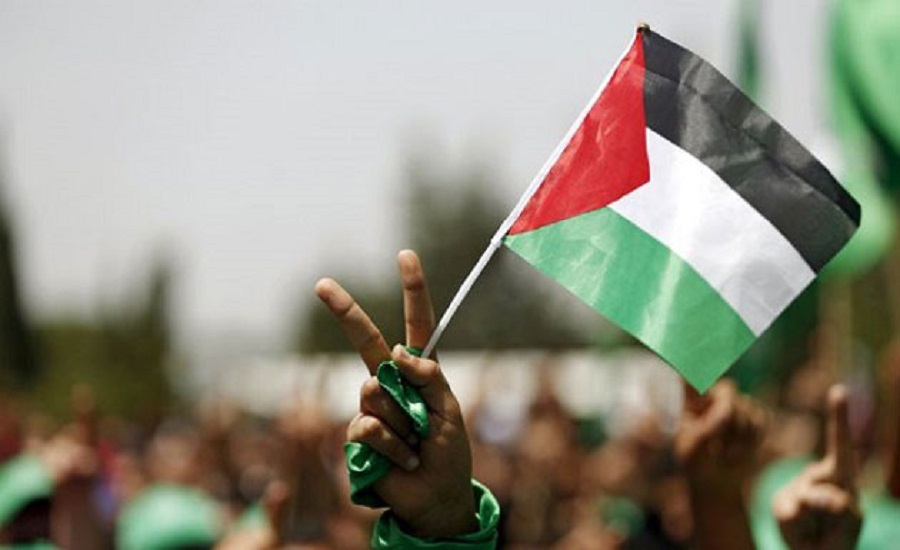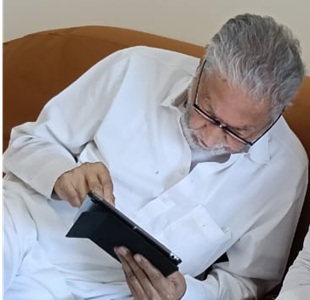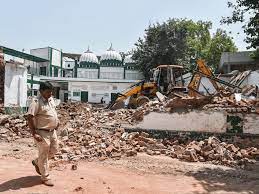Ram Puniyani
This time around (2014) the practitioners of sectarian politics had projected as if they will harp only on the issues related to development and Governance. But that surely is for sayings sake. While propaganda of development of Gujarat, strong leader, good governance is on the forefront, there is a lurking doubt that many a people may be by now realizing that the story of so called development cannot be defended beyond a point as so many studies and reports have shown the contrary facts. Authoritarian and dictatorial leader is not a strong leader, one is clear about that as strong leader is one who is inclusive and takes others along. So back to the fundamentals of communal politics, the issues related to ‘identity and faith’ are being subtly propped up.
Attacking the UPA II government for increase in the export of meat and beef (3rd April 2014) Narendra Modi mocked at UPA II by saying that cattle are being killed for the sake of ‘pink revolution’, which hints towards the meat business, export of meat, beef. In our country eating beef is very sensitive religious issue. It emerges that now despite this being a sensitive issue; on the ground of commerce it comes to our notice that India has become the biggest beef exporter in the world, beating Brazil. This is as per the latest meat exports figures from the Ministry of Food Processing. The data shows that India exported 1.89 million tons of beef in 2012-2013, which is a 50 per cent increase over five years’ ago, “Officially, the slaughter of cows is banned and beef production is actually buffalo meat. Here too, the slaughter is restricted to males and unproductive females,’’ explains the Department of Animal Husbandry official.
As such beef has been a part of India’s dietary traditions. In Vedic times the sacrifice of cows in the yagnas (rituals around fire) was a central feature. It is with the rise of agriculture that the restrictions were brought on the sacrifice of cows as cattle wealth was core to the development of agriculture. Swami Vivekananda, while speaking to a large gathering in USA said: “You will be astonished if I tell you that, according to old ceremonials, he is not a good Hindu who does not eat beef. On certain occasions he must sacrifice a bull and eat it.”
[Vivekananda speaking at the Shakespeare Club, Pasadena, California, USA (2 February 1900) on the theme of ‘Buddhistic India’, cited in Swami Vivekananda, The Complete Works of Swami Vivekananda, Vol 3 (Calcutta: Advaita Ashram, 1997), p. 536.]
This is corroborated by other research works sponsored by the Ramakrishna Mission established by Swami Vivekananda himself. One of these reads: “The Vedic Aryans, including the Brahmanas, ate fish, meat and even beef. A distinguished guest was honoured with beef served at a meal. Although the Vedic Aryans ate beef, milch cows were not killed. One of the words that designated cow was aghnya (what shall not be killed). But a guest was a goghna (one for whom a cow is killed). It is only bulls, barren cows and calves that were killed.”
[C. Kunhan Raja, ‘Vedic Culture’, cited in the series, Suniti Kumar Chatterji and others (eds.), The Cultural Heritage of India, Vol 1 (Calcutta: The Ramakrishna Mission, 1993), 217.] The pioneering research of Historian D.N.Jha also tells us that beef was the part of India’s dietary tradition. Same is corroborated by Dr. Pandurang Waman Kane in his multi Volume, “Bharatiya Dharmgranthon ka Itihas’ (History of Indian Scriptures) where he quotes from Vedas, Atho Annam Vya gau (Cow is veritably a food)
Cow came to become a holy animal with the rise of agricultural society for the obvious reasons of need for bulls in agriculture. It got associated with the religious sentiments. Contrary to the propaganda that it was Muslim kings who brought beef eating practices in India, the fact is that Muslim kings in deference to the feelings of the Hindu majority went on to put curbs on cow slaughter. Babar’s will to his son Humayun (Exhibit in National Museum) point to this fact. It says
“Son, this Nation Hindusthan has different Religions. Thank Allah for giving us this Kingdom. We should remove all the differences from our heart and do justice to each community according to its customs. Avoid cow-slaughter to win over the hearts of the people of this land and to incorporate the people in the matters of administration…” (Translated from the original- National Museum)
The propaganda that Muslims brought beef eating to India has no substance at all. As a matter of fact it was British who systematized it and appointed Khatiks (butchers) in their barracks for cow slaughter to supply beef for the army. With rise of the politics in the name of religion due to British policy of ‘divide and rule’, cow and pig were made instruments of instigating communal violence to polarize the communities along religious lines. Many a communal violence did break out in the name of cow slaughter or pig in a mosque. Earlier too the demand for cow slaughter ban has been raised and now it is banned in most of the states barring Kerala and West Bengal. So currently there are strict rules about cow slaughter and what is called beef is essentially buffalo meat. In recent times the murder of dalits in Gohana on the charge that they killed cow for its hide is too fresh in our memory. The killing of dalits was legitimized by a VHP leader saying cow is too holy for anything else to be considered.
As such beef has been part of Indian dietary practices amongst many communities especially amongst dalits and Adivasis all over, more so in Southern India. In the face of rising price of mutton, it is a rich source of protein for the poor; some do take to it for its taste. Recently when I was on a group tour to Eastern Europe, one Hindu family, which was part of our group, by and large was opting for beef as the main dish for their lunch or dinner.
The issue now is that should we have our dietary choices or not? The subtle hint that the UPA II is promoting the ‘Pink Revolution’ is a blatant communal use of the issue. The BJP spokespersons on TV channels are claiming that it is due to the promotion of this export that our milk production and agriculture is suffering. Whatever be other flaws of the current policies, one thing is sure that our milk production is on ascendance. Agriculture is suffering but not due to shortage of cattle. Such claimants need to do their home work and learn that by and large it is the poor, low caste who rear the cattle and they can’t bear the burden of old animals which can no more give the milk. The natural cycle of food and economics is dictating the present scenario, and communalizing it is unwarranted. We need to put our agricultural economy on the wheels of progress, rearing animals is an activity very close to agricultural economy, such a blatant communalizing the issue is counterproductive to our values as a democratic society.
All opinions and views expressed in columns and blogs are those of individual writers and do not necessarily reflect the editorial policy of Maeeshat.






0 Comments